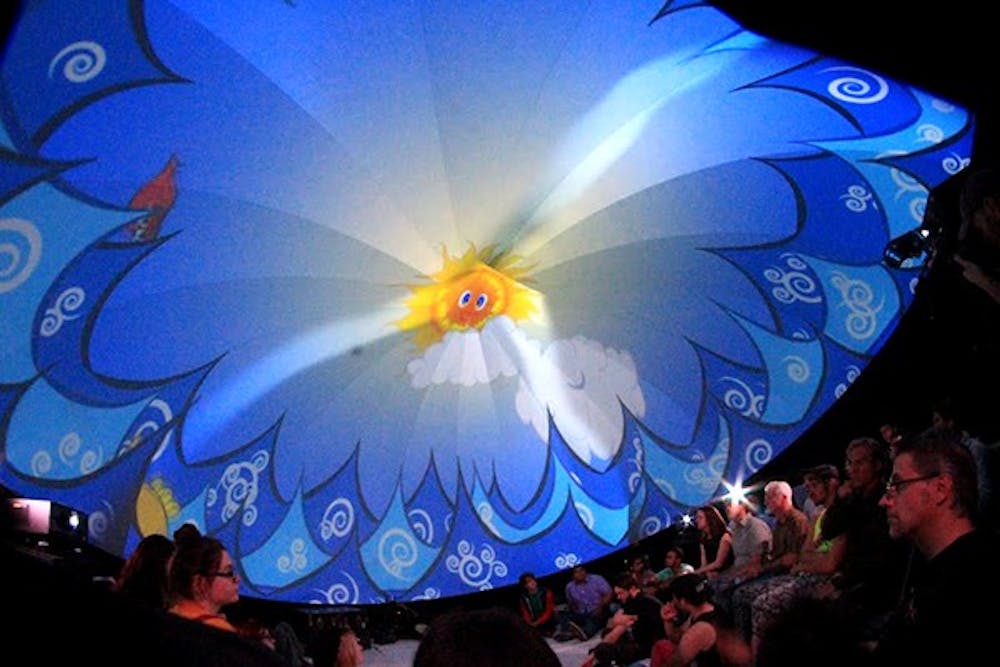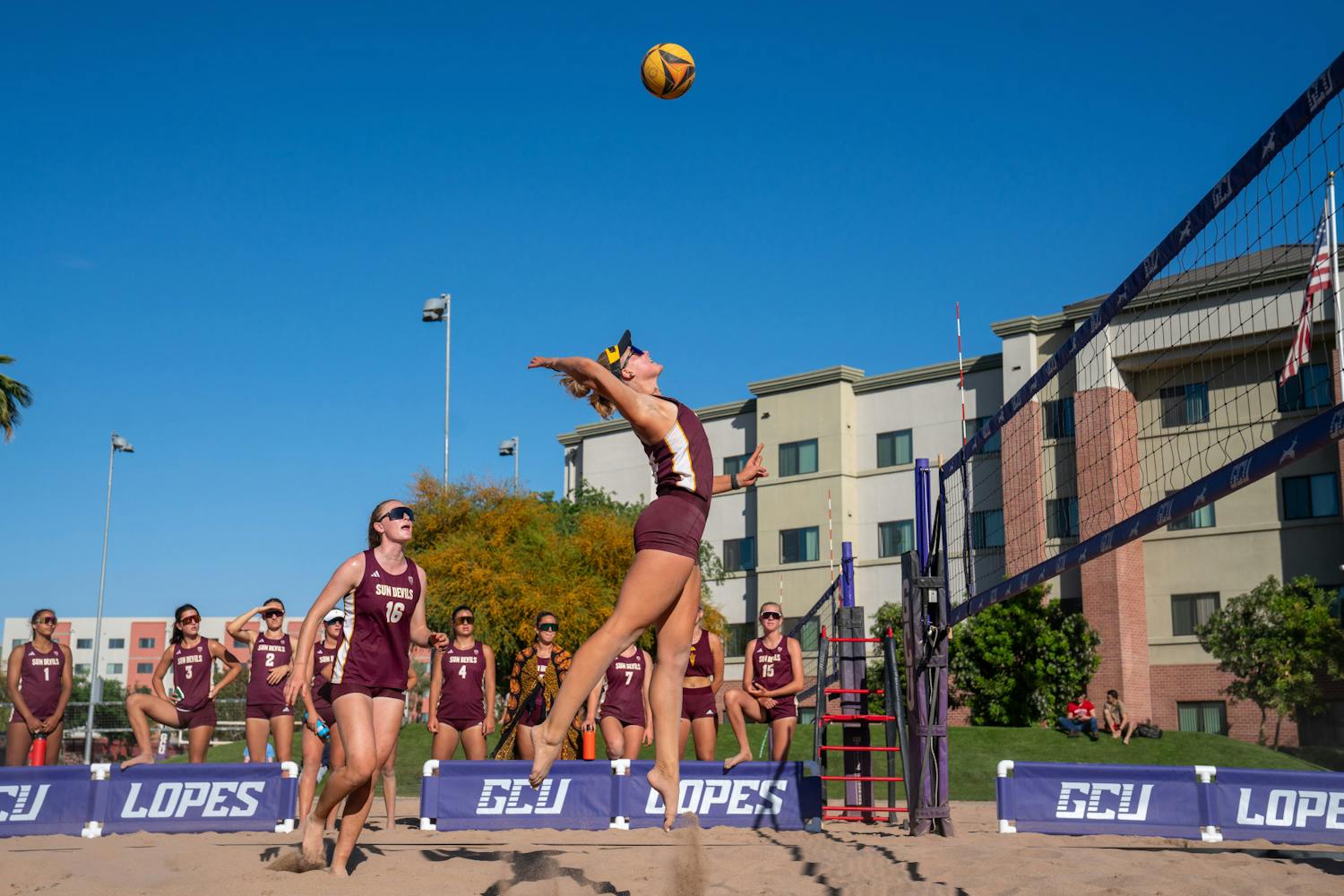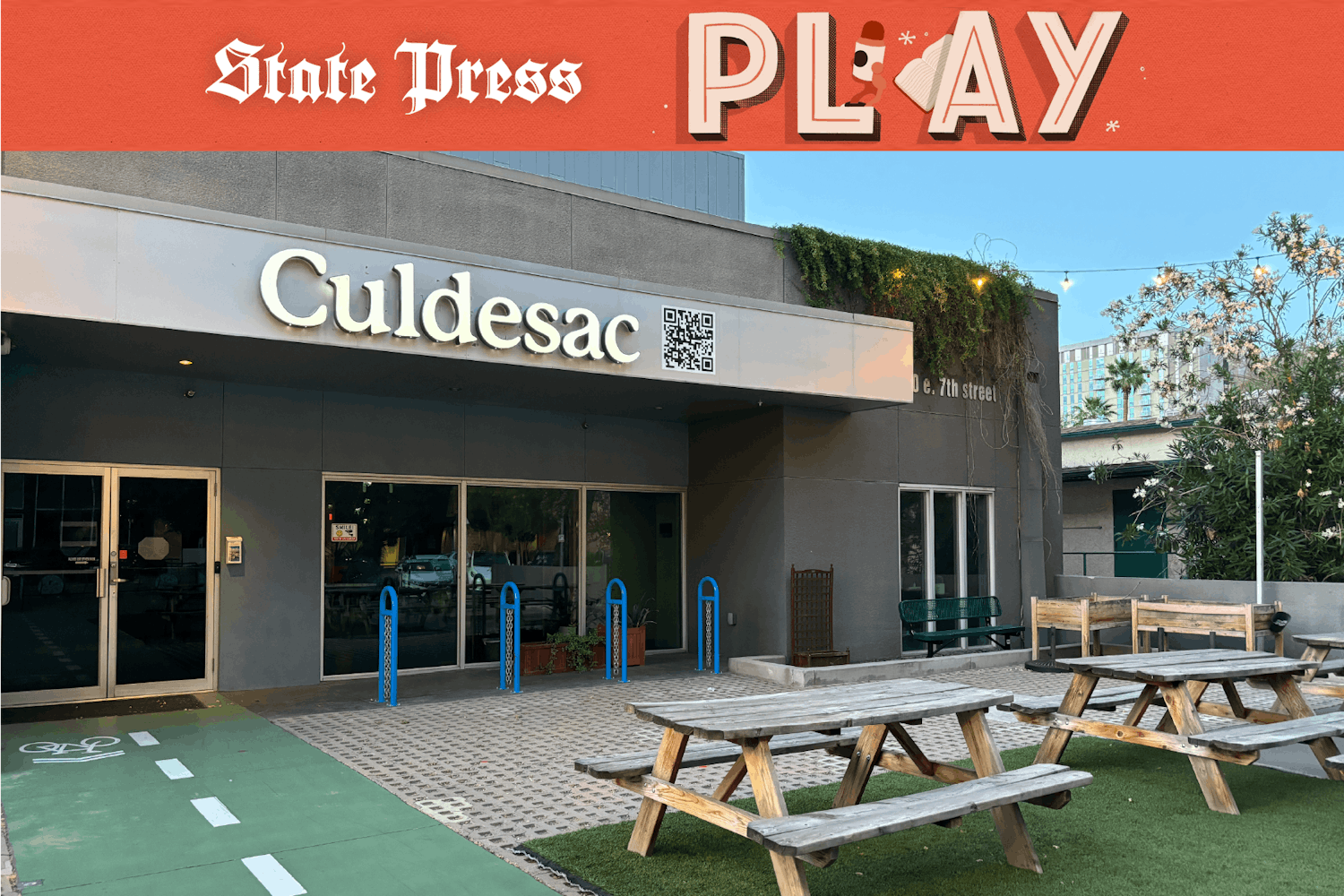 As the audience began to fill the Wonder Dome on Wednesday night the official logo of the touring dome rotated overhead. (Photo by Micaela Rodriguez)
As the audience began to fill the Wonder Dome on Wednesday night the official logo of the touring dome rotated overhead. (Photo by Micaela Rodriguez)
Faces in the dark dome illuminated as animation sprang to life and sound spiraled around the audience Wednesday at the Tempe campus. This is the future technology of storytelling.
The invention is called the Wonder Dome — a collaborative project between ASU and Ohio State University to build a 30-foot diameter dome that intends to revolutionize the world of live performances, gaming and human interaction.
Jake Pinholster, director of the School of Film, Dance and Theater, is the faculty adviser for Wonder Dome and said the project began three years ago during class.
“It was called Conceptualization and Collaboration," he said. "It’s a course a lot of our graduate students take. Dan came up with an interactive performance project that happened in a dome space.”
Theater graduate student Daniel Fine is the principal investigator, producer, writer and designer of the project. Fine and his team used the Wonder Dome not only for the entertainment of the animation, but to demonstrate to the audience the capabilities of the dome's software.
Inside the $35,000 dome, performers use Wii-motes, LED lights and Kinects while designers use 15 different computers, three projectors and about eight different speakers all run by different softwares made from various logarithms and algorithms that the team created.
All of that technology was put together as the audience witnessed the animation.
The first animation featured a rotating sun and waves with jumping fish. Stephen Christensen, who does the sound design for Wonder Dome, demonstrated how he could make the sound of the fish splashing back into the water move around the dome as the fish moved.
 The audience looks on as the projections are altered to show the different types of features that would be projected onto the dome during real performance. (Photo by Micaela Rodriguez)
The audience looks on as the projections are altered to show the different types of features that would be projected onto the dome during real performance. (Photo by Micaela Rodriguez)
Theater graduate student Matthew Ragan, who works with system design, media design and programming, explained the use of the Kinects via a giant pug on screen. The life-like pug moved following the motions of the actor. The pug’s mouth was moving along with a volunteer who spoke into a microphone to voice the pug. The sound travelled with it as it rotated around the dome.
The goal of the project is to work in real-time to create one fluid motion that responds to the performer's movements, Ragan said.
"(Fine and I) are both interested in the crossover of life performance and media performance," he said.
The team works together to make any alterations. During the demonstration, the team members explained that if they wanted the sound to follow the jumping fish, the animation coordinates can easily be sent to the sound worker.
As with any other developing technology, the Wonder Dome team faces many challenges. Each of the three projectors and their individual lenses cost thousands of dollars. The dome structure is $35,000, but expansion could cost up to $60,000, Ragan said. However, the team said this is a significantly low cost when compared to local planetariums.
Cesar Ruiz, an audience member, said stepping into the dome felt like a weird fairy tale.
"I can see the great potential for this to be used for storytelling for the people of today," he said.
Wonder Dome will be exhibited at the Mesa Arts Center from March 19 to March 23.
Reach the reporter at Chelsey.Ballarte@asu.edu or follow her on Twitter @chelseyballarte




